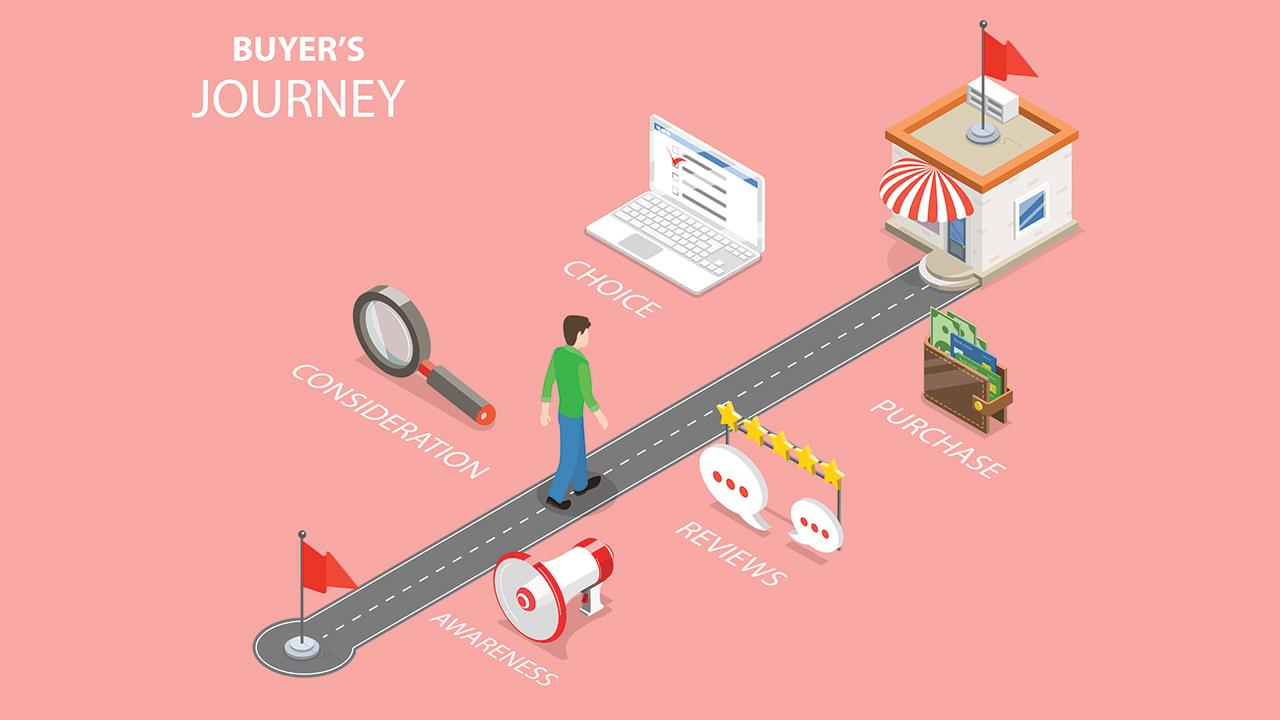

Understanding the importance of the customer journey is vital in ensuring your business continues to thrive. In this article, I’ll explain why it should be an essential part of how you deliver your services.
Firstly, put your hand up if you give good customer service. I’ll take it as a given that you’ve said yes and raised a hand. Next tell me – how do you give good customer service?:
When delivering our development days, 90% of people we speak to say these sorts of things. So, it begs the question that if we are all offering good customer service in this way, what makes us unique? How are we really standing out?
Mapping the customer journey
A customer journey is a series of steps or stages a customer or potential customer takes towards buying something from you.
The impact you can have on your customer’s decision making process across these stages is massive. By mapping out your own customer’s journey, you will find opportunities to build perceived value, credibility, and reputation – even before someone is your customer – resulting in increased profits.
It’s easy, as engineers, to think that your only opportunity to build trust and deliver that good customer service is when you’re actually with your customer on the job. But, as more modern business owners, we have incredible options available to us to improve communication at numerous stages before someone even becomes our customer.
Think about your actions when booking a holiday, finding that new restaurant, or even getting new windows. What do you do? I bet you do some research!
The bigger the problem or the cost, the more time you may put into finding solutions. You see a website that looks like it solves that problem, and you contact them. If they reply quickly, you expect it. But if they answer quickly, giving clear help and information, and something extra of value that you didn’t expect, how would that make you feel? Would you be happy to spend a few more pounds on that customer service? Am I guessing that’s a ‘yes’?
So, let’s take a look at what happens before you turn up at your customer’s doors with your overshoes, flow cup, and a fancy thermography camera.
A customer researches their problem and finds your website. If they enquire on your website, what happens then? You must build systems into your business that deliver responses quickly, on time, and relevantly – even when you’re busy.
If a customer calls and you’re busy under the floor or in a hot, itchy loft, you don’t want to miss the calls. But how can you automate an answer and capture that lead? Which phone system do you have to handle this, even when you can’t answer?
At the home survey, how do your systems allow you to quote quickly, follow up when you say you will and be sure to confirm the job should the opportunity arise? Which software option can help you with this, even when you’re busy?
After the job, how do you ensure your customers leave a review every time? Which email or SMS provider will you use? Will it be built into the CRM or sales software, or will it be another software system?
Never miss out
Customer service and customer journeys are processes that should work every time, especially when you’re busy. So, take some time out to look at every step of the customer journey and ask yourself how you improve every touchpoint. How can it be systemised to deliver the same customer service every time?
When your competition has a well-built website and top CRM system similar to your own, the quality of the customer journey is what can give you the advantage.
Adopting a customer-first approach to business will set you apart and make you a reliable brand. People will want to do business with you and be happy to pay more money for the privilege.
If you'd like to keep up-to-date with the latest developments in the heating and plumbing industry, why not subscribe to our weekly newsletters? Just click the button below and you can ensure all the latest industry news and new product information lands in your inbox every week.